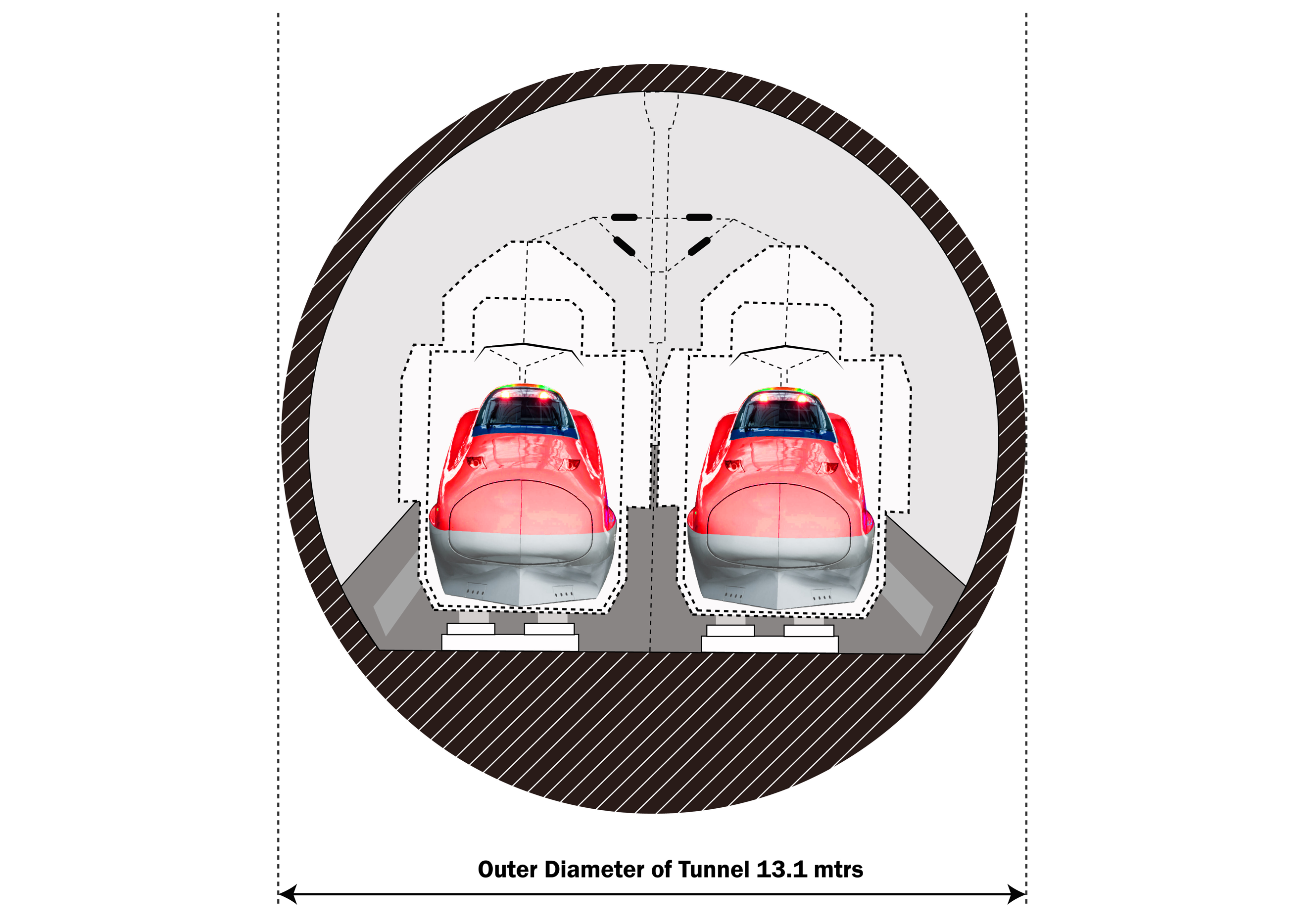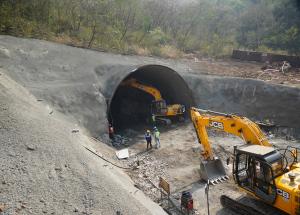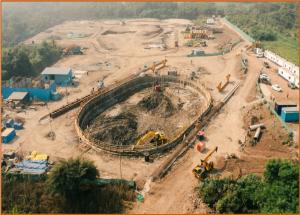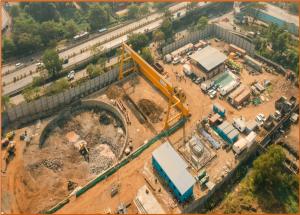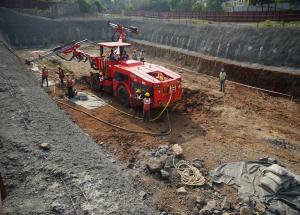Construction update of Mumbai HSR station
The land required for constructing the BKC station, which is about 4.8 hectares, has been handed over to the contractor by NHSRCL (National High-Speed Rail Corporation Limited).
The station will be built using the bottom-up method, which means that excavation work will commence from the ground level and concrete work will start from the foundation. The excavation required for the station is quite extensive, reaching a depth of 32 meters, with an approximate volume of around 18 lakh cubic meters.
To safely carry out such deep excavation, a ground support system must be constructed to prevent the soil from collapsing. This support system will involve the construction of 3382 secant piles, each ranging from 17 to 21 meters in depth. All the secant piles have been constructed. The excavation in the station area has begun, and about 1.5 lac cum earth is already excavated and disposed. The the secant piles are concurrently being supported with soil anchors and walers at specific intervals (ranging from 2.5 to 3.5 meters) as the excavation progresses.
Currently, there are 681 laborers and supervisors on-site working day and night. This number is expected to increase as the project advances. According to estimates, the maximum workforce required per day during peak times may reach up to 6000 individuals.
The primary ongoing activity at the site is the excavation and fixing of soil anchors and walers.
Update on Construction of 21 km Long Tunnel including India’s First 7 km Long Undersea Tunnel in the State of Maharashtra for The Bullet Train Project
21 km long India’s first underground/undersea tunnel is under construction between bullet train underground station at Bandra-Kurla Complex and Shilphata in the State of Maharashtra.
Construction work has already begun at following locations:
- 1.) Shaft 1 at Mumbai HSR station construction site: Shaft depth of 36 meters, 100% secant piling work completed, excavation work is currently under
- 2.) Shaft 2 in Vikhroli : Shaft depth of 36 meters, 100% piling work completed, excavation work is currently underway. This shaft will be used to lower two tunnel boring machines in two different directions, one towards BKC and another one towards Ghansoli
- 3.) Shaft 3 in Sawli (near Ghansoli): Shaft depth of 39 meters, excavation work is currently underway.
- 4.) Shilphata: This is the NATM end of the tunnel. Portal work has already begun at the site.
- 5.) ADIT (Additionally Driven Intermediate Tunnel) Portal: This portal will facilitate additional access to the underground/undersea tunnel for faster construction progress
Some of the challenges in construction of shafts:
-
a. Multiple controlled blasting with sufficient noise and air pollution prevention measures so as to cause minimal disturbance to the environment and population in the adjoining areas
-
b. Shafts are constructed in areas with high population density and adjoining utilities like various pipelines, electrical installation and other adjoining infrastructure projects like Metro, highways etc. It is being ensured that work is being done with minimal disruption
-
c. Disposal of excavated material under supervision of Maharashtra pollution control board (MPCB) through each trip approval and GPS tracker etc.
Various other facilities like Gantry cranes, labour colonies, site offices are also being constructed in tandem.
Additional details:
The tunnel will be a single tube tunnel to accommodate twin track for both-up and down track. 39 equipment rooms at 37 locations will also be constructed adjoining tunnel location as part of the package.
To construct this tunnel, TBMs with a cutter head of 13.6 Meter diameter will be used. Usually 5-6 Meter Diameter cutter heads are used for urban tunnels used in MRTS – Metro system.
Three Tunnel Boring Machines will be used to make about 16 km of the tunnel portion and the remaining 5 km will be through New Austrian Tunnelling Method (NATM).
This tunnel will be about 25 to 57 Meters deep from the ground level and the deepest construction point will be 114m below the Parsik hill near Shilphata.
Three shafts at BKC (under package C1), Vikhroli, and Sawli at approximate depths of 36, 56 and 39 Meter depths respectively will facilitate the construction. Inclined Shaft of 42 Meter at Ghansoli and Tunnel portal at Shilphata will facilitate the construction of approx. 5 km of tunnel through NATM tunnelling method. (refer plan at Annexure 1)
Enclosed:
- 1.) Plan for C2 package-Annexure 1
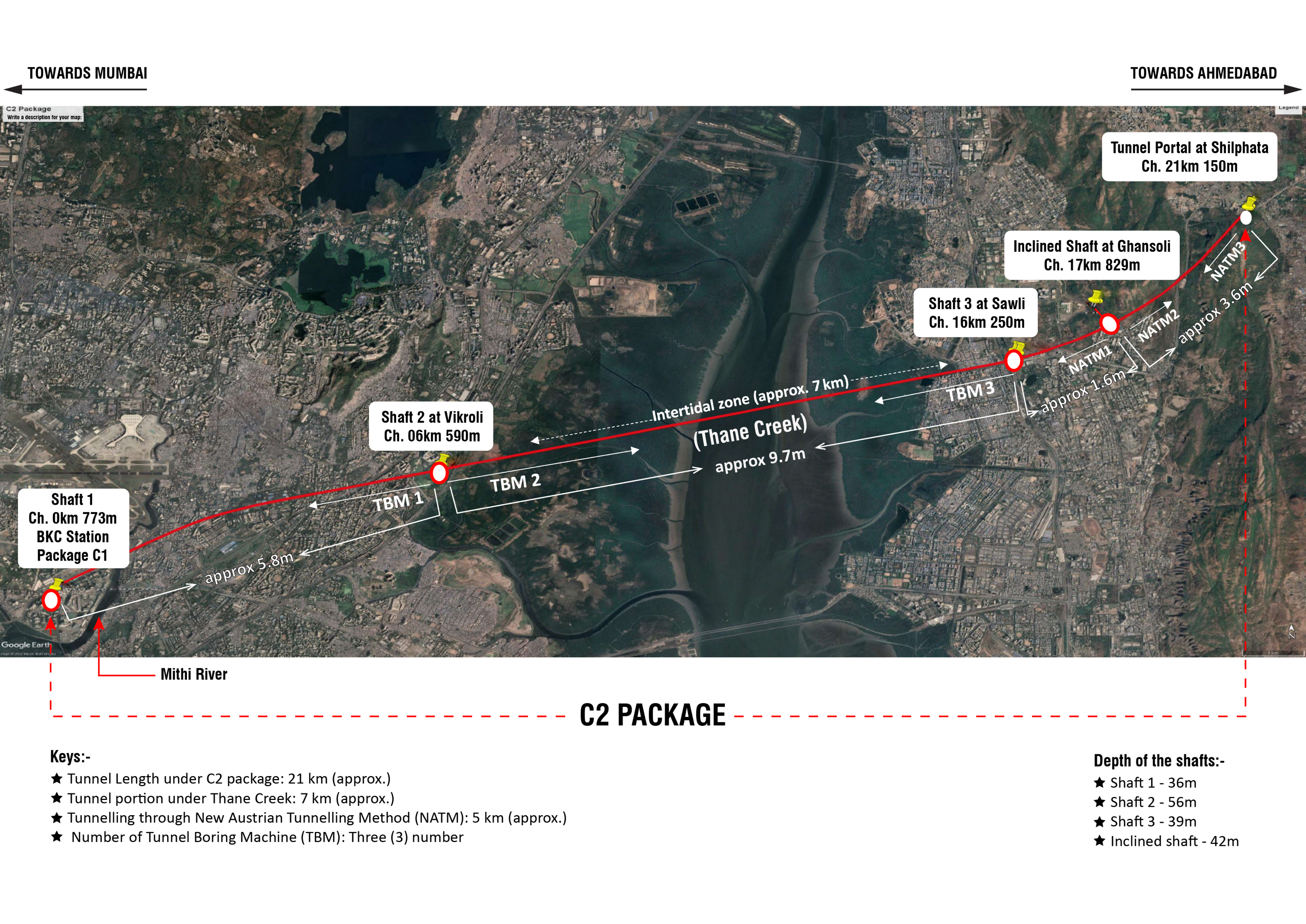
- 2.) Tunnel Graphic
